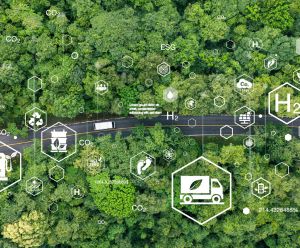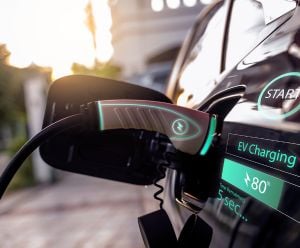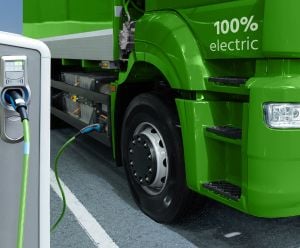
Charging ahead: How governments are jump-starting the EV transition

As the fight against climate change heats up, more consumers and businesses are turning to electric vehicles (EVs) in hopes of reducing their carbon emissions.
According to statistics by the U.S. Department of Energy, an EV emits an average of 2,727 pounds (1,237kg) of carbon equivalent per year, compared to a whopping 11,435 pounds (5,187 kg) of carbon for gas-powered vehicles – almost five times the difference. This vast disparity highlights the potential of EVs to reduce greenhouse gas emissions and combat climate change.
However, the widespread adoption of EVs requires a united effort from governments worldwide, beyond new technology and eager consumers.
Fortunately, with subsidies, tax breaks, investments in charging infrastructure, and government rules, policymakers are fueling the EV transition and transforming the automotive landscape.
Offer tax breaks & subsidies
One of the primary ways governments are promoting EV adoption is through subsidies. Buyers can enjoy direct financial assistance, which lowers the cost of EVs and makes them more affordable.
For instance, rebates in Singapore under the EV Early Adoption Incentive (EEAI) and the enhanced Vehicular Emissions Scheme – which increases surcharges for more pollutive vehicles – can bring down the cost of owning a fully electric car by up to S$45,000 (€$30,700).
Similarly, the Faster Adoption and Manufacturing of Electric Vehicles (FAME) and FAME II were initiatives introduced in India up till March 2024. This scheme successfully offered subsidies to support the electrification of public and shared transportation of around 7,000 electric and hybrid buses and 1 million electric two-wheelers.
Tax incentives also make it cheaper for businesses considering the switch to electric vehicles. From 2009 up until 2022, the Chinese government offered more than 200 billion yuan (US$28 billion) on tax breaks and EV subsidies to consumers and businesses.
And this investment has paid off. The country has since become the world’s largest auto market and sells more electrified vehicles than any other country, with 9.5 million cars exported in 2023 compared to a modest 5,000 units in 2010.
Build charging infrastructure
Another key concern for individuals and businesses considering EVs is the access to charging stations.
Many drivers face range anxiety, which is the fear that an EV will run out of power before reaching a charging station.
To mitigate this concern, governments are investing heavily in developing charging networks to make EVs more practical for everyday use.
Based on the the International Energy Agency (IEA) data, South Korea had 201,000 public chargers for 357,000 plug-in electric passenger cars at the end of 2022. This is equivalent to 563 charging stations per electric car, the highest density in any of the world’s largest EV markets.
As for China, the country falls just behind South Korea, ranking seventh in terms of chargers per EV on the road due to its huge electric vehicle fleet. However, it still has a whopping 1.76 million charging points, accounting for almost two-thirds of the world’s public charging infrastructure.
Australia is also making strides in increasing the number of charging sites. A report from consulting firm Next System showed that there is a 90 percent growth in the number of charging stations.
The increase in charging stations helps make EVs more accessible for everyday use by addressing the second biggest concern for motorists about the availability of public charging stations, based on a Pureprofile survey of more than 2,000 Australians who were deciding whether to buy an electric vehicle.
Implement regulatory mandates
Governments are also making rules to accelerate electric vehicle adoption.
Another major hindrance to the adoption of EVs is that ICE vehicles remain readily available for drivers. This is why regulations set in place include deadlines for phasing out ICE vehicles.
In Europe, the European Union (EU) has set strict emissions standards that are pushing automakers to produce more electric vehicles. The EU also aims to ban the sale of new ICE vehicles unless they operate only on carbon-neutral fuels by 2035, creating a clear timeline for the transition.
The Singapore government has initiated proactive regulations, having announced plans to phase out petrol and diesel vehicles by 2040. Singapore also offers incentives like the EEAI and enhanced Vehicular Emissions Scheme for the early adoption of EVs.
Accelerating toward a greener future with electric vehicles
As part of their holistic plan to steer the automotive industry toward a cleaner future and promote sustainable transport across the globe, governments worldwide are working with consumers and the private sector to drive this change. The results have been promising, with a 35 percent increase of electric car sales in 2023, with almost 14 million new electric cars registered globally last year.
While electric vehicles are a significant step toward cleaner transportation, the government should prioritize a multimodal approach for the most sustainable transportation future. This will mean building robust public transport systems and cycling infrastructure as alternative forms of transport for shorter trips that can boast a lower environmental footprint.
The large-scale shift toward electric vehicles is no longer a question of "if" but "when". As technology continues to evolve and EV supply chain challenges are resolved, we can expect a smoother ride toward a more sustainable transportation ecosystem.
ALSO WORTH READING















 English
English